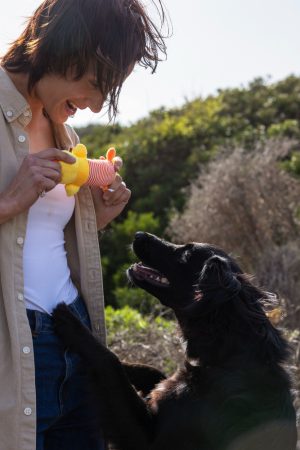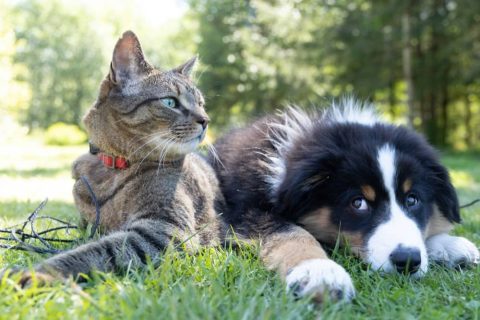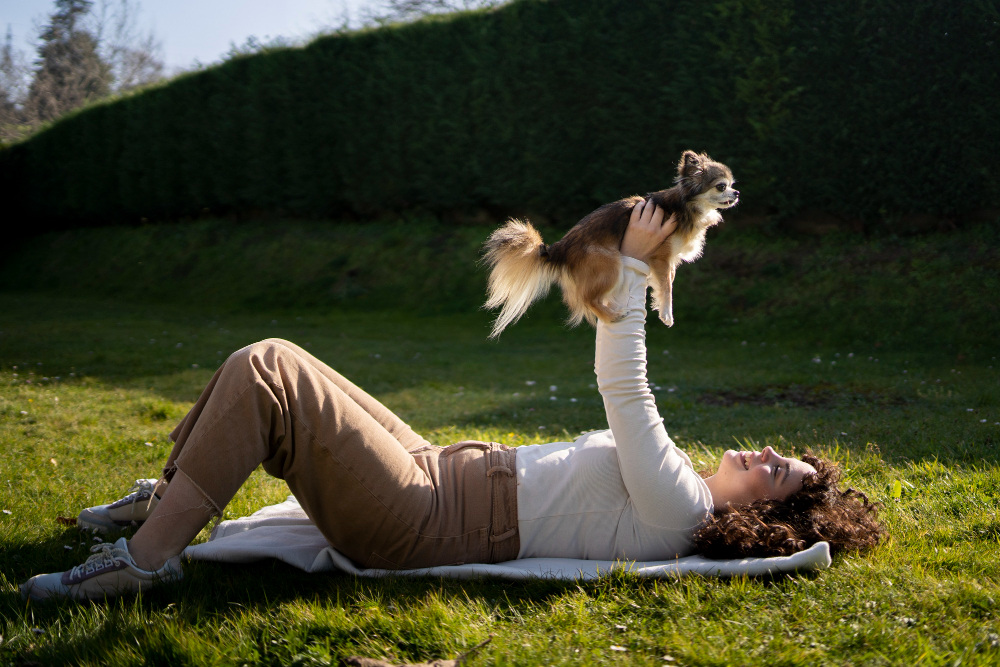Spring is my favorite season—until my dog starts sneezing, my cat sheds enough to knit a sweater, and muddy paw prints become part of my home décor.
If you’ve ever tried to enjoy a sunny spring day only to come home to a flea-covered dog or a cat scratching like it’s a full-time job, you’re not alone. I’ve made all the seasonal mistakes so you don’t have to.
Let’s walk through what I’ve learned (the hard way) about spring pet care routines—from grooming and allergies to hydration and outdoor safety.
Contents
- Why Spring Isn’t As Easy on Pets As It Is on Us
- Allergy Season: Not Just for Humans
- Shedding Season: Your Vacuum’s Worst Enemy
- Flea and Tick Prevention: Don’t Wait Until You See One
- Outdoor Play = More Water, Fewer Worries
- Is Your Yard Really Pet-Safe?
- What About Older Pets?
- The Vet Check-Up I Never Skip Anymore
- Final Thought: Trust Your Gut, Then Trust Your Vet
Why Spring Isn’t As Easy on Pets As It Is on Us
Their bodies are catching up to the season too
You know how people talk about “spring cleaning”? Pets go through that—only it’s biological. My golden retriever blows his coat in March like clockwork, and my cat becomes strangely hyper as the days get longer.
What I didn’t realize early on is that spring pet care isn’t just about more walks—it’s about recalibrating their routine from winter mode to warm-weather readiness.
Allergy Season: Not Just for Humans
How I figured out my cat wasn’t just being dramatic
At first, I thought my cat’s red eyes and constant licking were just part of her attitude. Turns out, she had seasonal allergies. Yup—pet allergy symptoms are real.
Here’s what tipped me off:
- Excessive scratching around the neck and ears
- Licking paws until they looked raw
- Sneezing fits (yes, cats sneeze)
After a quick vet visit, we switched to hypoallergenic wipes and I started wiping her paws after she explored the balcony. It helped more than I expected. Lesson learned: what looks like sass may actually be suffering.
Shedding Season: Your Vacuum’s Worst Enemy
If you have a long-haired pet and you’re not brushing daily in spring… good luck. I skipped this step one year and ended up with fur tumbleweeds drifting across my floor like Western movie props.
What works:
- Daily brushing (even 5 minutes helps)
- Lint rollers in every room (trust me)
- Occasional baths—but don’t overdo it
Too many baths can dry out their skin. I stick to one bath every 3–4 weeks using a gentle, pet-friendly shampoo. That’s kept itching to a minimum.
Flea and Tick Prevention: Don’t Wait Until You See One
Yes, that one tick on my dog’s belly scarred me for life
If you’ve ever pulled a tick off your dog, you’ll never want to relive it. Ever. I used to think I could skip flea and tick prevention until summer. Huge mistake.
Now I start in March:
- Monthly flea/tick chews recommended by my vet
- Post-walk inspections (ears, paws, belly)
- Avoiding tall grass when possible
Pro tip: Fleas don’t care if your dog is “mostly indoors.” They’ll find a way.
More on prevention at capcvet.org (I’ve bookmarked it).
Outdoor Play = More Water, Fewer Worries
My pup doesn’t care if it’s 60 or 90 degrees—he’s running full speed
Spring means more activity, which means hydration becomes a daily checklist item. But it’s easy to forget your dog needs way more water after that 45-minute zoomie session in the park.
What I do now:
- Bring a collapsible bowl on walks
- Add water to dry food on extra active days
- Watch for signs of overheating (excessive panting, drooling, glazed eyes)
Bonus tip: I freeze broth cubes as “treats”—my dog thinks he’s getting dessert.

Is Your Yard Really Pet-Safe?
Mine wasn’t—and my dog found out first
I didn’t know lilies were toxic to cats or that fertilizer can mess with a dog’s paws. That all changed after an expensive emergency vet visit.
What I check now:
- No lilies, daffodils, or cocoa mulch
- Block off sharp garden tools
- Rinse paws after any lawn treatment
If you have a yard, set up a shaded area and always leave out water. It makes a difference.
What About Older Pets?
My senior cat has arthritis, and I swear spring weather makes her joints creakier. Turns out, the transition out of winter cold can be hard on older animals.
I adjusted her routine by:
- Keeping her bedding extra cushy
- Letting her move at her own pace
- Giving her a warm, sunny window perch
Check in with your vet to see if supplements make sense. We started with joint chews, and she’s moving noticeably better.
The Vet Check-Up I Never Skip Anymore
Spring is now my non-negotiable pet wellness exam season. We get allergy plans in place, update preventatives, and double-check any new lumps or odd behaviors.
I bring a little list:
- Changes in appetite
- Itching or licking patterns
- Weird behaviors (like obsessive tail chasing—yep, that happened)
Final Thought: Trust Your Gut, Then Trust Your Vet
Every spring teaches me something new about my pets. They don’t complain like we do—but they show us what they need.
If they’re acting different, scratching more, or just not themselves—it’s probably worth looking into. Spring can be a great time for bonding, new adventures, and yes, a little extra vacuuming.
Just don’t forget: mud is temporary. Allergies can be treated. And fur rolls off, eventually.
Your pets will thank you. Even if it’s just with a tail wag and a slightly cleaner couch.









